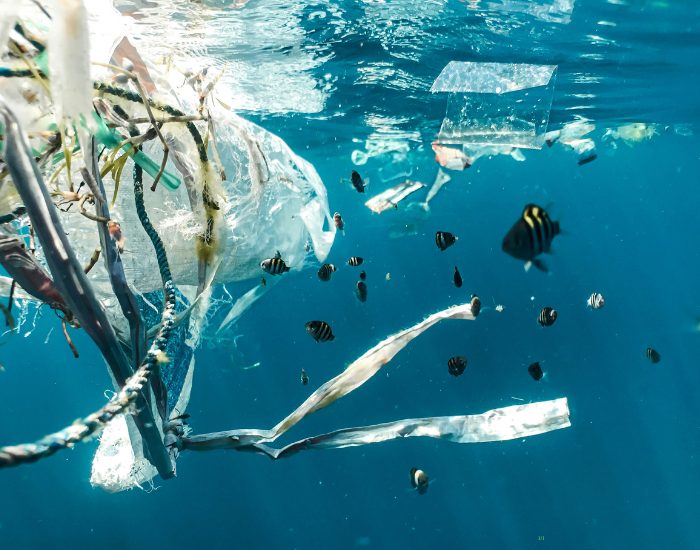By Lynn Bryant

Photo by Naja Bertolt Jensen on Unsplash
My husband and I recently watched The Graduate, one of our favorite old movies. Early in the movie, Benjamin, a recent college graduate, is given a piece of sage career advice from one of his parents’ friends; in a word, “plastics.” While that line always made us smile in the past, these days it no longer seems amusing.
Although plastics may not have been Benjamin’s destiny, they have certainly become ours. The invention of entirely synthetic plastic in 1907 laid the foundation for an industry that would transform the world. Plastic was inexpensive, easy to mass-produce, and opened the door to newly invented products in emerging markets. The real impact of plastic waste began in the post-war mid 20th century, as plastic became widely used in throwaway items like food wrapping, shopping bags, and polystyrene food containers. In 1973, the now-ubiquitous single-use beverage bottle made from polyester (PET) was introduced, accelerating the global plastic waste crisis we face today.
Somehow during the present century, drinking from plastic water bottles became a trend— ironically symbolizing a commitment to healthy living. Yet, despite growing awareness of the impacts of plastic waste, over 500 billion PET bottles are sold globally every year. According to Earthday.org, Americans purchase about 50 billion water bottles annually, averaging 13 per person per month. Only about 30 % are recycled. The rest end up in landfills or oceans, where they take approximately 450 years to decompose. Microplastics are now present in nearly every water system on Earth, and by 2050, it is estimated that there will be more plastic in the oceans by weight than fish.
The good news is that individuals, families, and communities can reduce their contribution to the plastic waste crisis through everyday choices. Here are a few suggestions:
· Invest in a reusable water bottle made from stainless steel, glass, or BPA-free plastic. Depending on how much bottled water you normally buy, your purchase could pay for itself in just a month.
· Choose alternative containers for single-serving beverages. Cardboard, glass, and aluminum containers are better options. Unlike plastic, which degrades after just a couple of recycling cycles, glass and aluminum can be recycled indefinitely.
· Skip unnecessary disposables. Decline plastic straws and cutlery at restaurants. Bring your own container if you expect to take home leftovers. Try beeswax wraps instead of plastic wrap for food storage.
· Shop smarter. Grocery shopping can be tricky because so many products are packaged and wrapped in plastic. When possible, select items with minimal or recyclable packaging. Choose unpackaged foods and shop in bulk. Avoid disposable produce bags, choose bar soap over liquid, and always bring reusable shopping bags.
· Recycle properly. Follow state guidelines, rinse items thoroughly, and dry them before recycling. Failing to do so can contaminate an entire batch of recyclables, send them to a landfill. For a complete recycling guide visit: www.guvswmd.org
· Think bigger for events. If you regularly host gatherings—for example, sporting events—consider investing in or fundraising for a large water dispenser so people can refill reusable bottles or glassware instead of relying on single-use plastics.
Becoming aware of our disposable plastic use is the first step toward making more environmentally responsible choices. Climate and environmental challenges can feel overwhelming, but reducing plastic waste is something each of us can do. Every small, conscious choice adds up—and collectively, we do make a difference.